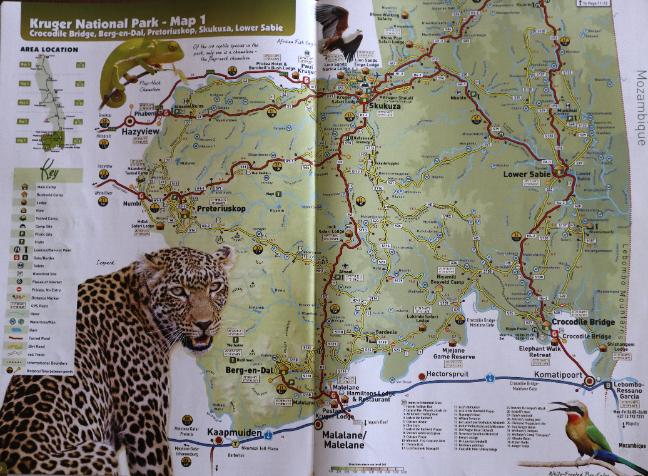
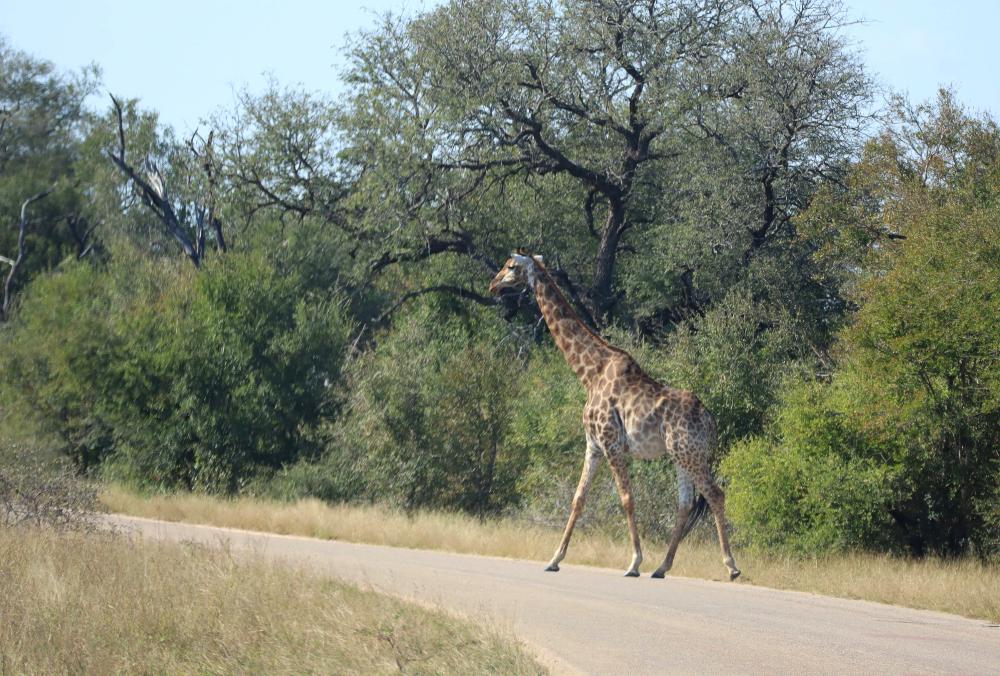
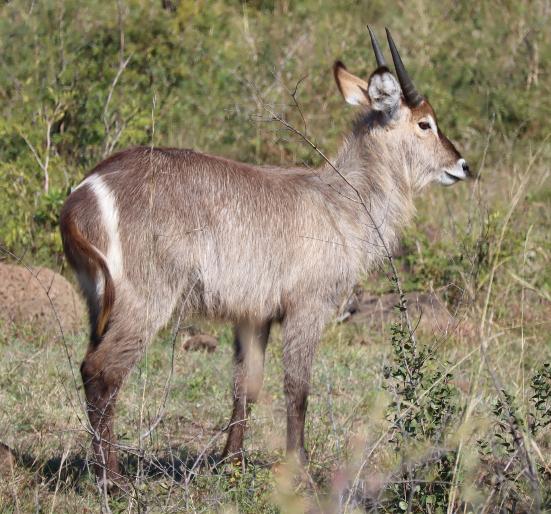
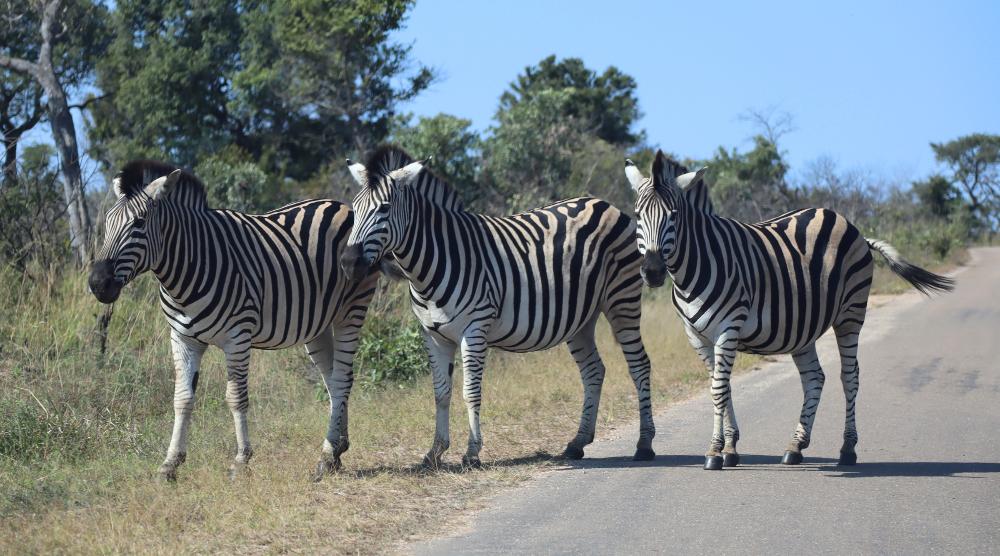
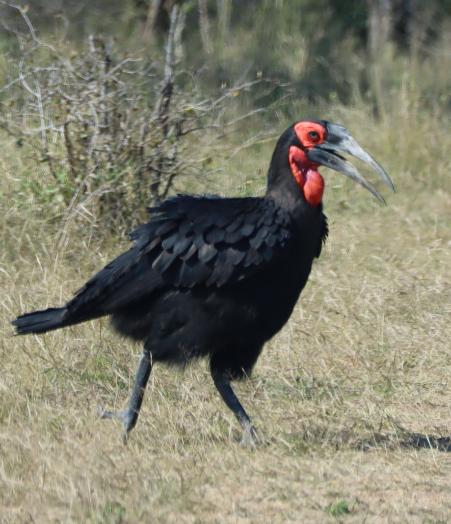



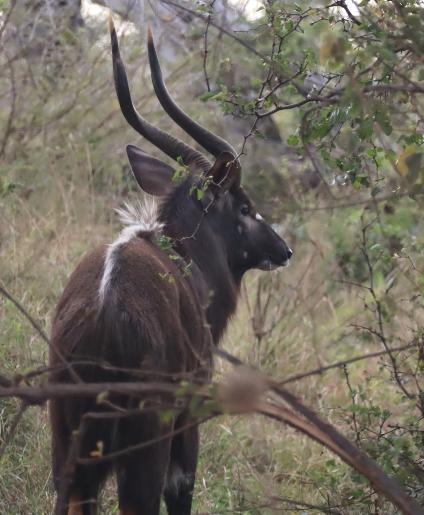
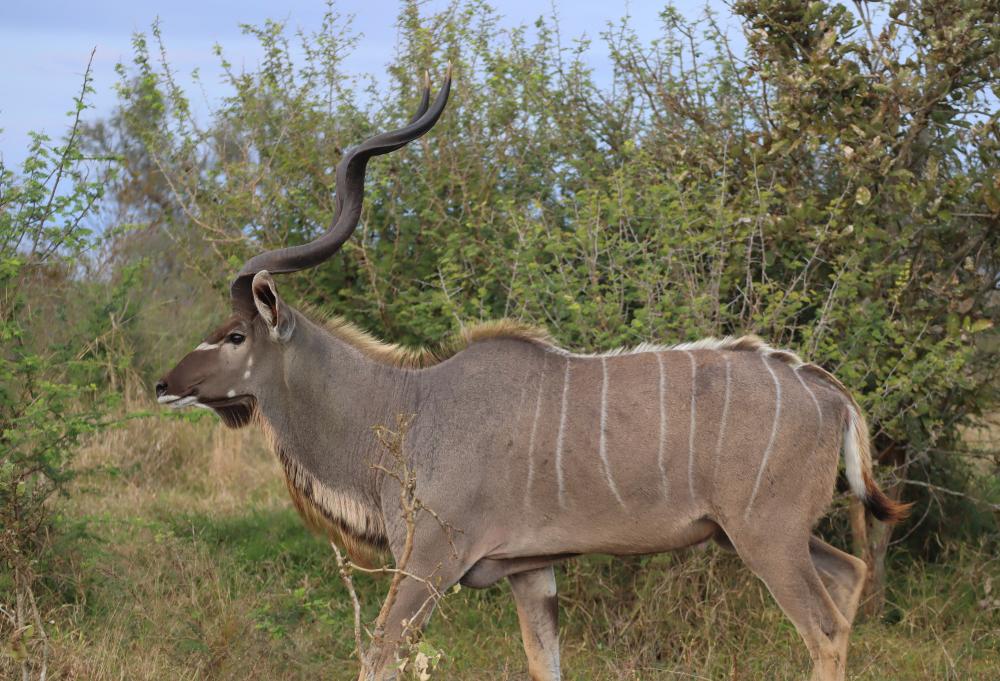




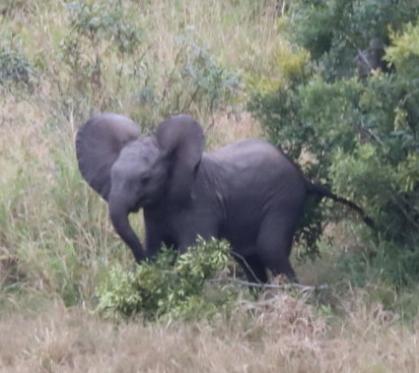

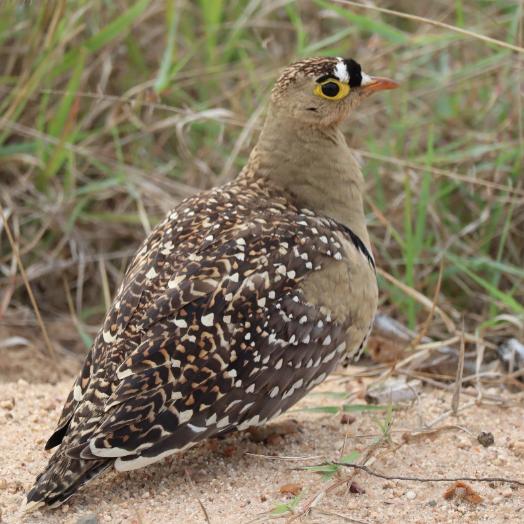
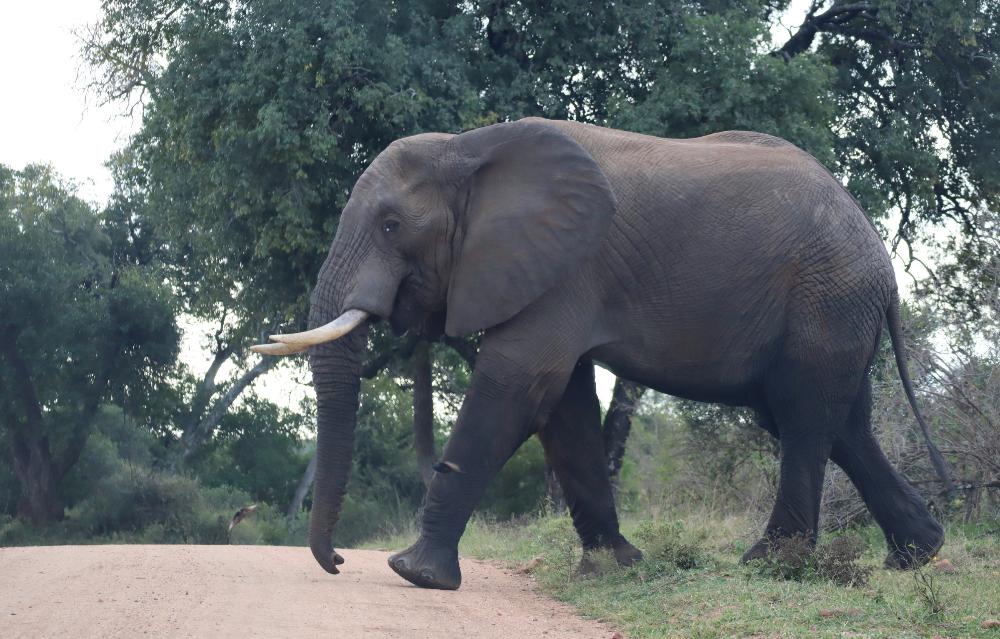
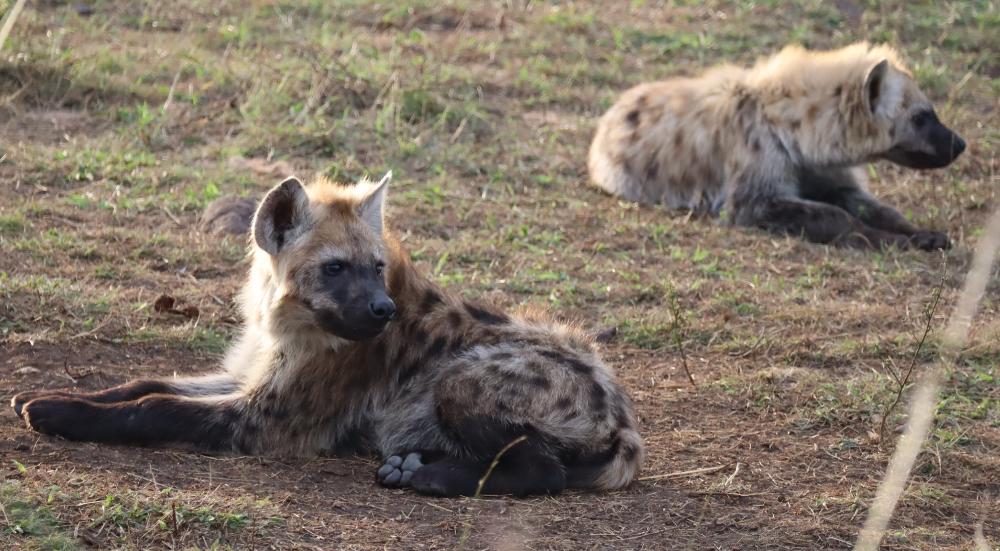


Where We Be
| Our first two days in Kruger yield some impressive sightings -- including this adult male kudu with three twists to his horns |
| Skukuza Camp -- Kruger NP, South Africa |
If you've ever thought about doing a self-drive
safari in Africa, look no further than Kruger
National Park. The main roads between camps
are paved, and most of the gravel ones are
nicely graded, so you can get around just fine
in a rental car from Joburg airport (about five
hours away). Kruger is chock-full of wildlife
(including the big five), so each day brings the
chance to see something new and exciting. For
our part, we spend nine days at four different
camps in Kruger and love every minute of it.
Thousands of South Africans go on self-drive
safari each year, so Kruger is well situated to
handle tourists. Most rest camps offer simple
but decent "bungalows," a sit-down restaurant,
gas, and even takeout food and snacks. Camps
are surrounded by perimeter fences. Outside
those fences, you're expected to stay inside
your vehicle at all times except at designated
rest stops. Kruger is huge, so you'll want to do
your homework before you go and reserve your
lodgings in advance on the official SanParks
website. We suggest focusing on the southern
part of the park (richest in wildlife) and staying
at several camps. Our choices are Skukuza,
Satara, Lower Sabie, and Crocodile Bridge.
safari in Africa, look no further than Kruger
National Park. The main roads between camps
are paved, and most of the gravel ones are
nicely graded, so you can get around just fine
in a rental car from Joburg airport (about five
hours away). Kruger is chock-full of wildlife
(including the big five), so each day brings the
chance to see something new and exciting. For
our part, we spend nine days at four different
camps in Kruger and love every minute of it.
Thousands of South Africans go on self-drive
safari each year, so Kruger is well situated to
handle tourists. Most rest camps offer simple
but decent "bungalows," a sit-down restaurant,
gas, and even takeout food and snacks. Camps
are surrounded by perimeter fences. Outside
those fences, you're expected to stay inside
your vehicle at all times except at designated
rest stops. Kruger is huge, so you'll want to do
your homework before you go and reserve your
lodgings in advance on the official SanParks
website. We suggest focusing on the southern
part of the park (richest in wildlife) and staying
at several camps. Our choices are Skukuza,
Satara, Lower Sabie, and Crocodile Bridge.
| As soon as you enter the park, your safari begins. In our case, we're greeted by this three-zebra welcoming committee just inside Phabeni Gate. |
| Cool bird sightings include this southern ground hornbill (left) and double banded sandgrouse (right) |
| Shortly afterwards, we spot this steenbok (a very tiny antelope). Not long after that, we see multiple cars pulled over -- a sure sign of something interesting -- and catch a glimpse of three cheetah before they disappear. Welcome to Kruger! |
| Driving yourself around Kruger feels a bit like driving yourself around Yellowstone -- except the range of animals is much greater |
| Our first-ever sighting of a nyala |
| Park lodgings are basic but pleasant. At Skukuza Camp you'll get a bungalow with clean beds, a decent shower, and an outdoor kitchen and grill. Skukuza is the largest rest camp in the entire park and is a good place to get your bearings. It has a sit-down restaurant, takeout options, mini-grocery, gift shop, petrol station, and even a bank. It's like a mini-village. |
| Perhaps the best sighting of our first two days is this fully adult male kudu crossing the road in front of us -- then circling past us |
| This Verreaux's eagle owl is a rare sighting pointed out to us by a local family in the car next to ours |
| A different spotted hyena detours around our car |
| We also thoroughly enjoy watching these elephants wallow in the mud |
| Nearby, a boisterous baby elephant puts on quite a show |
| Later on, this big fella crosses the road right in front of us -- you can see him watching us out of the corner of his eye |
| Two juvenile spotted hyena rest right beside the road -- perhaps their den is nearby and they're waiting for their mother to return |
| Bless you, my child |
| We recommend you purchase the Kruger Park Map & Guide for 160 rand (~$10). It's worth every penny and is available at most park entry gates and gift shops. |
| The SanParks website allows you to book directly online (be sure to book well in advance). A Wild Card is a good value for stays of a week or more. It grants you access to Kruger plus 80 other parks for a year at a cost of ~$350 per couple. You can also pay as you go: Kruger admission is R440 (~$26) per adult per day. |
| This juevenile waterbuck has the characteristic white bullseye on its rump |

| If you decide to go, here's what we recommend: Arrive at Joburg airport (JNB) and stay at an airport hotel like the Marriott Protea. Next morning, use their free shuttle to pick up your rental car. Drive to either Graskop (if seeing Blyde River Canyon) or Hazyview (if going directly to Kruger) and spend another night there. Hazyview is only twenty minutes from Phabeni Gate -- a good entry gate for camps like Skukuza in the southern part of the park. Be aware: Kruger is HUGE -- over 7,500 sq miles (nearly 20,000 sq km), so consider sticking to its southern third (the red circle). Even with nine days to explore, we only manage to see a fraction of all there is to see. |
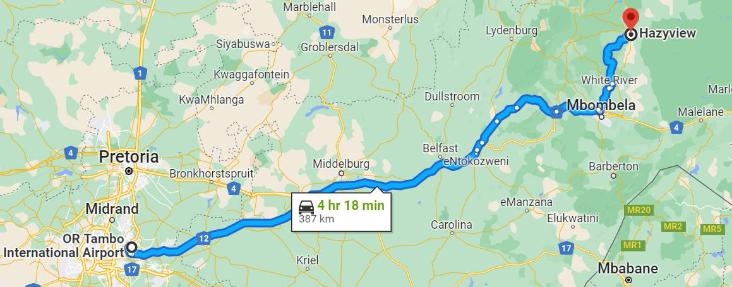
| We manage to snag one of the popular riverfront bungalows at Skukuza -- where we can see crocodile from our patio! Note the electrified perimeter fence. |
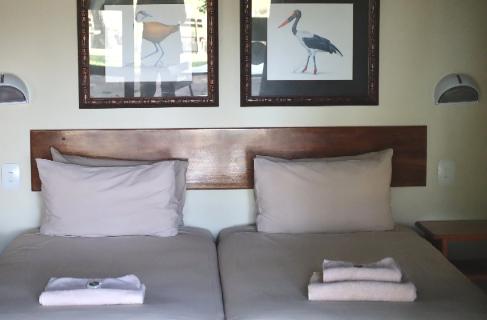
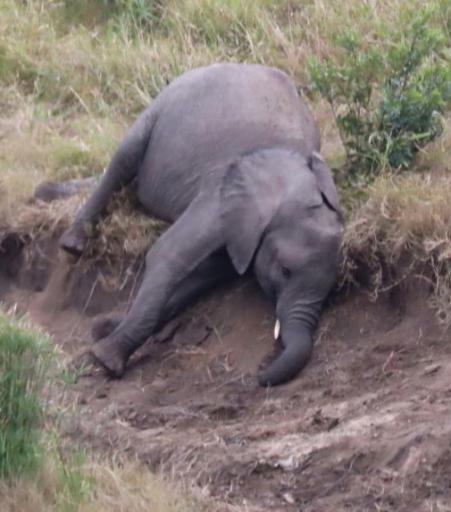
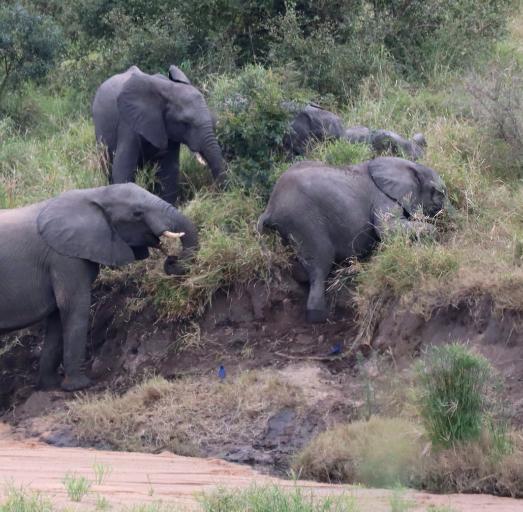
| African fish eagle are quite stunning, and despite seeing them all through Botswana, we never managed to get a good picture of one -- until now |
| (Click on map for larger image) |
| And two warthog dash in front of us |
| Map data ©2022 Google |
| Map data ©2022 Google |
